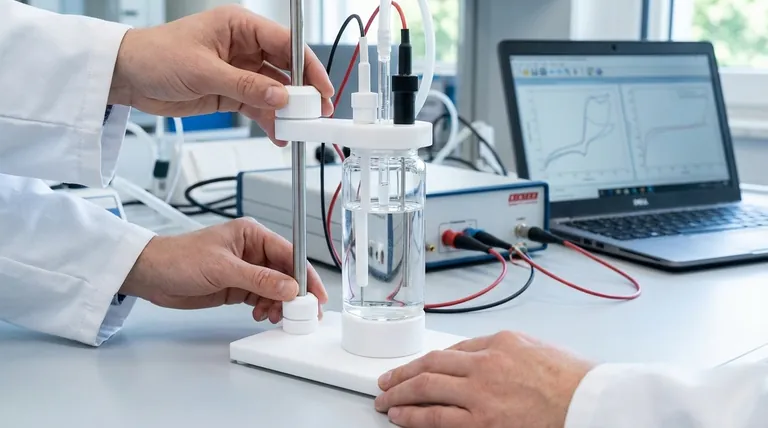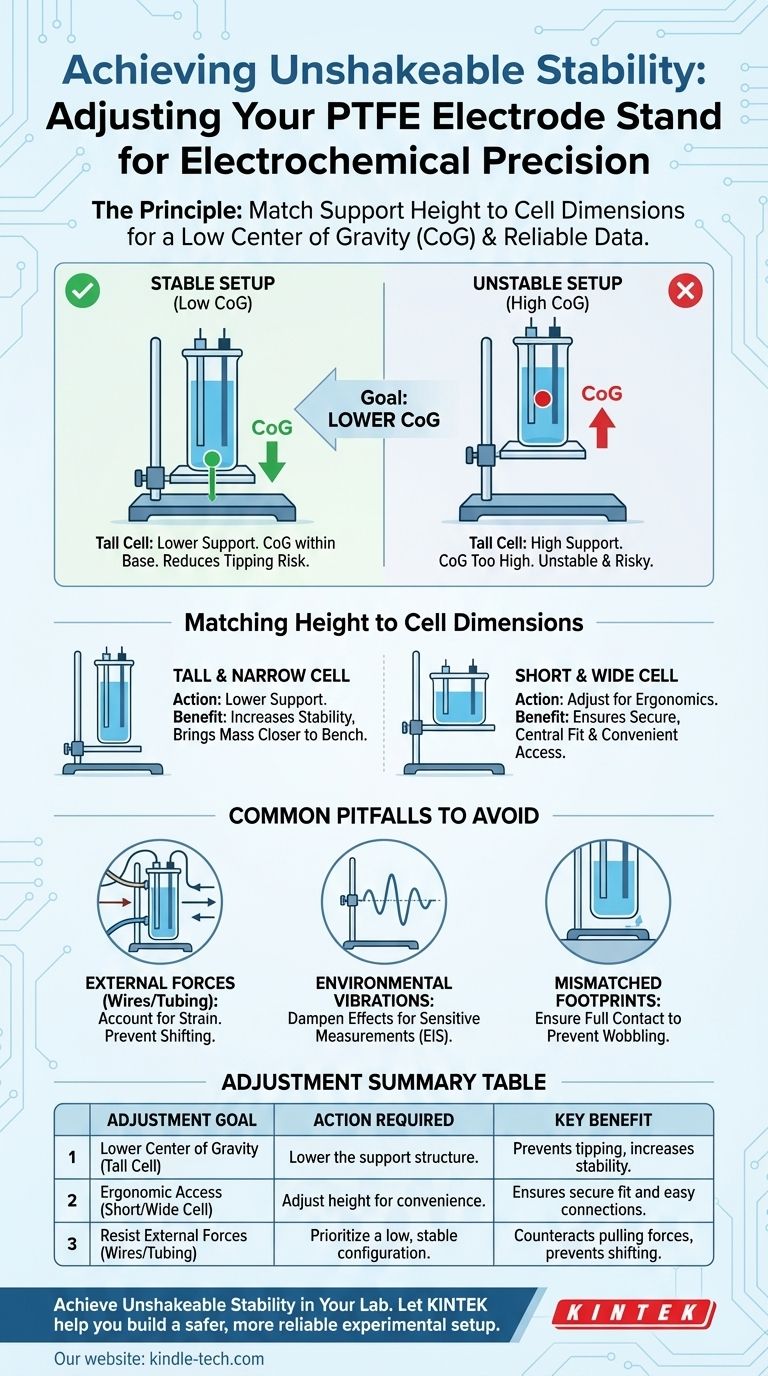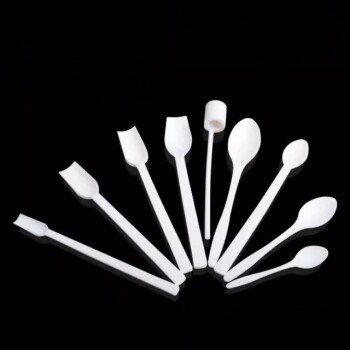To properly fit a PTFE electrode stand, you must adjust the height of its support structure to match the specific dimensions of your electrolytic cell. The primary goal is to position the cell so its center of gravity is low and well within the boundaries of the stand's base, ensuring maximum stability for your experiment.
The core principle is not simply about making the cell fit, but about creating a secure, stable, and vibration-resistant platform. This physical stability is the foundation for achieving accurate and reproducible electrochemical measurements.

The Principle of a Stable Setup
A correctly adjusted stand prevents accidental tipping, minimizes the influence of vibrations, and ensures your electrodes remain in a consistent position. This is non-negotiable for reliable data collection.
Understanding the Key Components
The PTFE stand provides a chemically inert and non-conductive base for your experiment. Its key feature is an adjustable support, which holds the cell.
The electrolytic cell is the glass or plastic vessel containing your electrolyte solution and electrodes. Cells come in various heights and diameters.
The Critical Role of Center of Gravity
The fundamental goal of the adjustment is to maintain a low center of gravity. When the cell is placed on the stand, their combined center of gravity must be positioned directly over the base.
If the cell is too high, the setup becomes top-heavy and unstable. A minor bump could ruin a multi-hour experiment or damage expensive equipment.
Matching Height to Cell Dimensions
For a tall and narrow cell, you will likely need to lower the support. This brings the bulk of the cell's mass closer to the lab bench, increasing its stability.
For a shorter, wider cell, the height adjustment is less critical for stability but should be set for convenient access to the cell top and connections.
Common Pitfalls to Avoid
Simply ensuring the cell doesn't fall over is the bare minimum. A professional setup accounts for more subtle factors that can compromise data quality.
Overlooking External Forces
Remember to account for wires, cables, and any tubing connected to your cell. These can exert a constant pulling force. A stable, well-adjusted stand will resist this strain and prevent the cell from shifting.
Ignoring Environmental Vibrations
Even minor vibrations from the building or nearby equipment can disturb the electrode-solution interface. A stable stand with a low center of gravity helps dampen these effects, which is crucial for sensitive measurements like electrochemical impedance spectroscopy (EIS).
Mismatched Footprints
Ensure the diameter of your cell does not overhang the edge of the support surface. The entire base of the cell must be in contact with the stand to prevent wobbling and ensure an even distribution of weight.
Making the Right Choice for Your Goal
Your adjustment strategy should be guided by the physical characteristics of your specific electrochemical cell.
- If your primary focus is on a tall, jacketed cell: Lower the support as much as possible to create the most stable base and counteract the high center of gravity.
- If your primary focus is on a short, low-volume cell: Adjust the height for ergonomic access while confirming the cell sits securely and centrally on the support.
- If your primary focus is on a complex setup with many connections: Prioritize a low and stable configuration to resist any pulling or torque from attached wiring and tubing.
Ultimately, a carefully adjusted stand is the first step toward building a reliable and safe experimental environment.
Summary Table:
| Adjustment Goal | Action Required | Key Benefit |
|---|---|---|
| Lower Center of Gravity (Tall Cell) | Lower the support structure. | Prevents tipping, increases stability. |
| Ergonomic Access (Short/Wide Cell) | Adjust height for convenience. | Ensures secure fit and easy connections. |
| Resist External Forces (Wires/Tubing) | Prioritize a low, stable configuration. | Countacts pulling forces, prevents shifting. |
Achieve Unshakeable Stability in Your Lab
A properly adjusted PTFE electrode stand is fundamental for the accuracy and reproducibility of your electrochemical work. KINTEK specializes in high-quality lab equipment and consumables, providing the reliable tools your laboratory needs for success.
Let us help you build a safer, more reliable experimental setup.
Contact our experts today to find the perfect stand and support for your specific electrolytic cells and research goals.
Visual Guide

Related Products
- Sample Support Body for Electrochemical Tests
- Platinum Sheet Electrode for Laboratory and Industrial Applications
- Reference Electrode Calomel Silver Chloride Mercury Sulfate for Laboratory Use
- Electrolytic Electrochemical Cell for Coating Evaluation
- Platinum Auxiliary Electrode for Laboratory Use
People Also Ask
- What are the factors that affect sample size? Optimize Your Study's Power and Precision
- How can auxiliary equipment be installed on the PTFE electrode stand? Ensure Stable & Interference-Free Setup
- What are the steps for post-experiment procedures after using the cell with a conventional aqueous solution? Ensure Accuracy and Reproducibility
- How should an electrode holder be cleaned as part of regular maintenance? Ensure Reliable Electrochemical Measurements
- What are the proper procedures for post-treatment and storage of an electrode holder after an experiment? Ensure Accuracy and Longevity



















